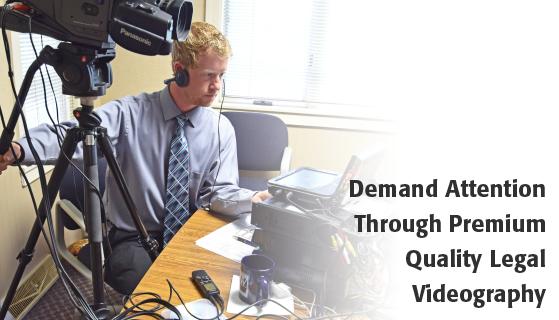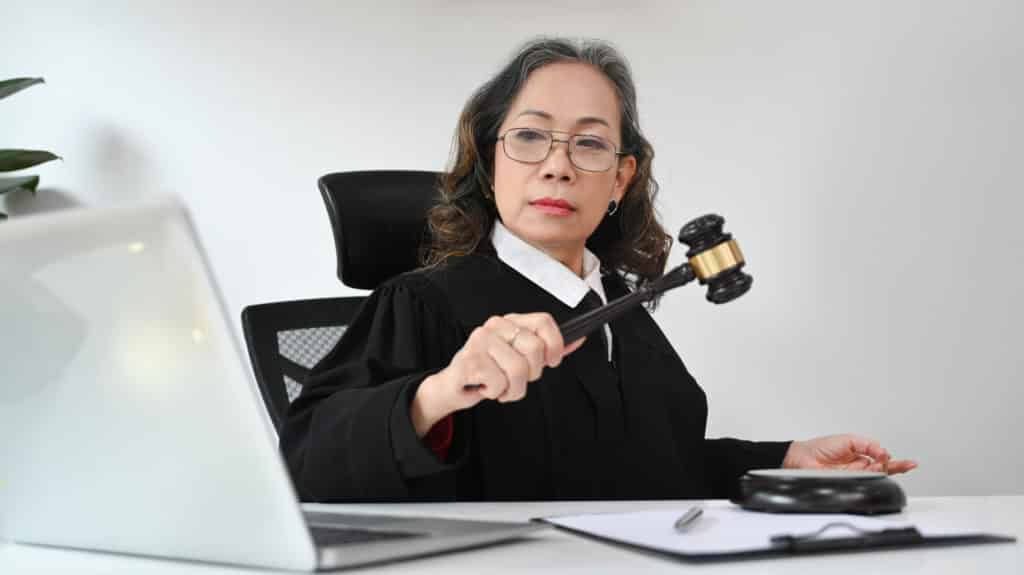Exactly How Legal Videography Improves Accuracy in Courtroom Proceedings
Exactly How Legal Videography Improves Accuracy in Courtroom Proceedings
Blog Article
Understanding the Relevance of Videography in Legal Process
The combination of videography into lawful proceedings has actually arised as a significant factor in the presentation and interpretation of proof. By catching visual aspects such as body movement and facial expressions, videography enhances the narrative surrounding witness testimonies and can greatly influence court assumptions. As the legal landscape evolves, recognizing its ramifications on trustworthiness and quality becomes important for lawyers. What best methods should be taken on to maximize its effectiveness, and how might future improvements reshape this essential aspect of the judicial procedure?
Duty of Videography forthcoming
Videography plays an increasingly vital function in legal procedures, working as a powerful medium for offering proof. The assimilation of video recordings into the legal structure enables an extra dynamic representation of facts, making it possible for jurors and courts to imagine occasions as they transpired. This visual documentation can incorporate a series of materials, consisting of monitoring video footage, taped witness testimonies, and expert demos, all of which can substantially boost the evidentiary landscape.
Among the key advantages of videography is its capability to capture subtleties that may be shed in composed accounts. Facial expressions, body language, and situational context can provide essential insights, helping to convey feelings and intents that text alone can not. The use of video evidence promotes an extra appealing court experience, potentially assisting jurors in understanding complex cases.
As modern technology developments, the quality and access of videographic proof have enhanced, making it an indispensable part of modern-day legal practices. Courts increasingly acknowledge the value of video as a dependable source of information, motivating lawyers to adapt their methods for evidence presentation. Eventually, videography offers not just to illustrate facts however likewise to enhance the general stability of the judicial process.

Enhancing Credibility and Clarity
A significant advantage of incorporating videography in lawful process is its capacity to boost both reliability and quality of proof provided in court. Videographic evidence can catch subtleties that written papers might overlook, such as tone, body language, and context. This graph enables discretionary to much better understand the conditions bordering the situation, thereby fostering an extra exact understanding of the occasions in concern.

Additionally, the clearness afforded by videography lowers the probability of misconception that can arise from textual descriptions. This precision is specifically critical in complex instances, where details can be quickly misinterpreted. Eventually, by presenting evidence in an aesthetically obtainable style, videography not just enhances the integrity of the judicial process however likewise supports informed decision-making by those involved in lawful procedures.
Impact on Court Assumption
The incorporation of videographic proof considerably influences court perception, often leading to extra engaged and informed deliberations. Jurors are normally a lot more receptive to aesthetic details, which can boost their understanding of complex cases. Videography presents truths in a manner that is both easily accessible and compelling, enabling jurors to link with the evidence on a more personal level.
Furthermore, the capacity to witness occasions as they occurred can stimulate emotional reactions that written transcripts or verbal statements may fall short to generate. This psychological involvement can lead jurors to create more blog here powerful opinions pertaining to the reliability of witnesses and the general story of the situation. The aesthetic representation of evidence also helps in clarifying ambiguities, making it much easier for jurors to grasp the context and value of the details offered.
Furthermore, videography can function as an effective tool for narration, making it possible for attorneys to create an influential narrative that reverberates with the court. When jurors can envision situations and witness crucial moments, their ability to deliberate attentively and get to a knowledgeable decision is substantially improved, ultimately affecting the result of lawful process.
Finest Practices for Legal Videography
Executing finest practices in lawful videography is important for making certain that aesthetic proof is both effective and legitimate in the court. Select professional professionals that specialize in lawful videography to ensure the technical quality of the recordings. This includes making use of high-resolution electronic cameras and professional sound devices to catch clear visuals and audio.
Second, maintain proper paperwork throughout the recording process. This entails creating an in-depth log that includes timestamps, summaries of the material, and the identities of all people existing. Such paperwork can strengthen the authenticity of the video.

Additionally, consider the usage of suitable editing and enhancing techniques. While it is crucial to preserve the original material, minor changes for clearness-- such as boosting audio levels-- can enhance the overall presentation without changing the substance.
Future Trends in Legal Videography
As lawful videography proceeds to evolve, arising techniques and technologies are forming the future landscape of visual evidence in the court (Legal Videography). One significant fad is the integration of high-def and 4K video clip high quality, improving the quality and detail of recorded testaments and proof. This better resolution help jurors in thoroughly examining the trustworthiness of witnesses and the nuances of the here and now products
Furthermore, making use of fabricated knowledge (AI) in video clip analysis is acquiring grip. AI devices can assist in recognizing essential minutes in footage, creating records, and even examining non-verbal interaction, which supplies much deeper insights right into witness integrity. In addition, virtual truth (VIRTUAL REALITY) and i was reading this increased reality (AR) are positioned to reinvent just how proof is provided, allowing jurors to submerse themselves in crime scenes or circumstances, therefore fostering a much more profound understanding of the context.
Final Thought
In recap, videography acts as an indispensable tool in legal proceedings, boosting the presentation of evidence and enhancing the general understanding of cases. By capturing non-verbal cues and bolstering the trustworthiness of witness accounts, videography significantly affects court understanding and decision-making procedures - Legal Videography. Sticking to best methods guarantees the efficiency of legal videography, while arising patterns promise to further increase its role in the judicial system, eventually fostering an extra enlightened and involved legal environment
Videography plays an increasingly essential function in legal process, serving as a powerful tool for offering evidence.A considerable benefit of incorporating videography in lawful process is its ability to boost both credibility and clarity of evidence presented in court. Eventually, by presenting proof in a visually available style, videography not only reinforces the integrity of the judicial procedure however likewise sustains enlightened decision-making by those included in lawful proceedings.
In recap, videography serves as an indispensable tool in legal procedures, improving the discussion of proof and enriching the general understanding of cases. Legal Videography. Adhering to ideal techniques makes sure the efficiency of click resources lawful videography, while emerging fads promise to additional increase its role in the judicial system, eventually promoting an extra enlightened and engaged legal setting
Report this page